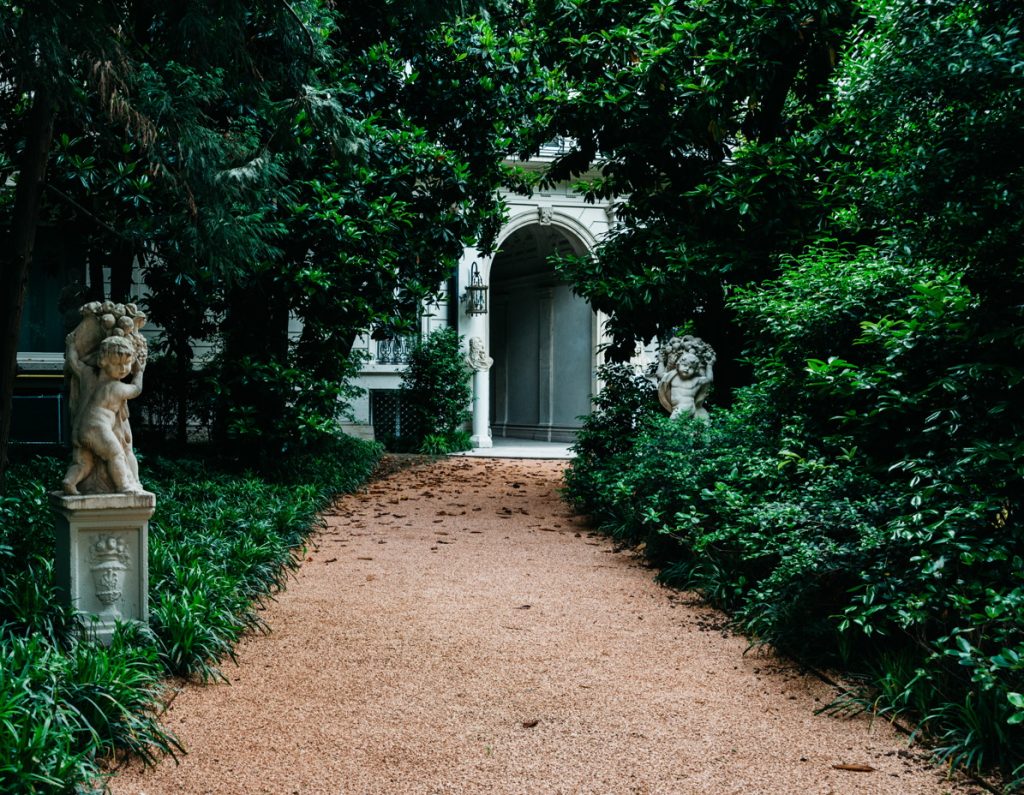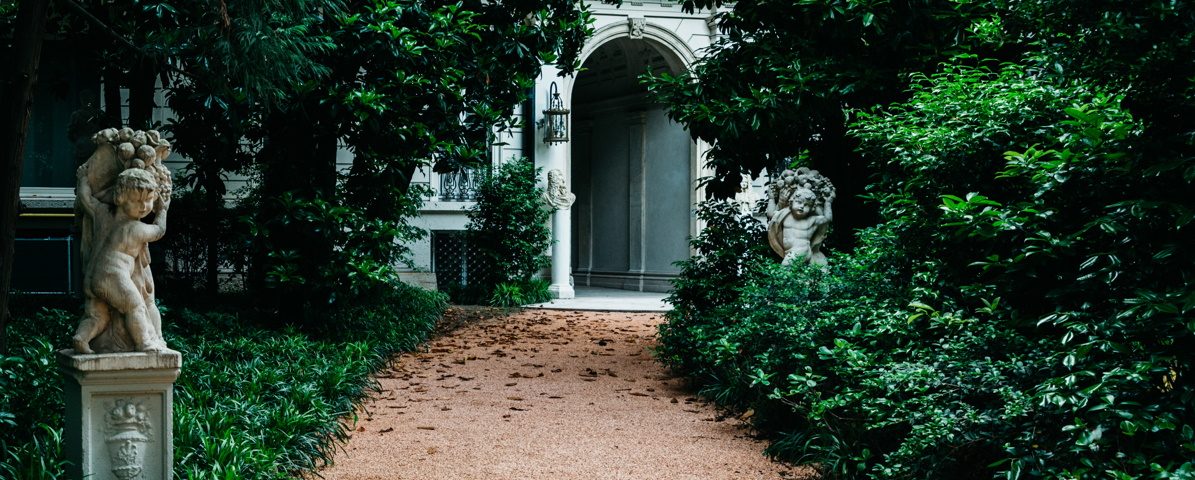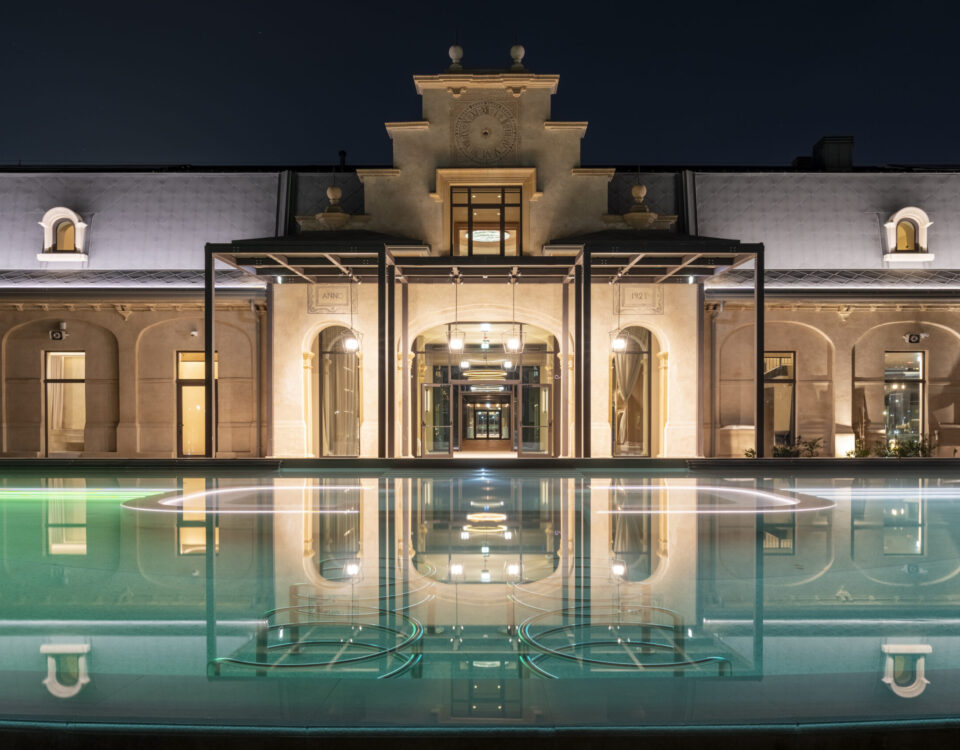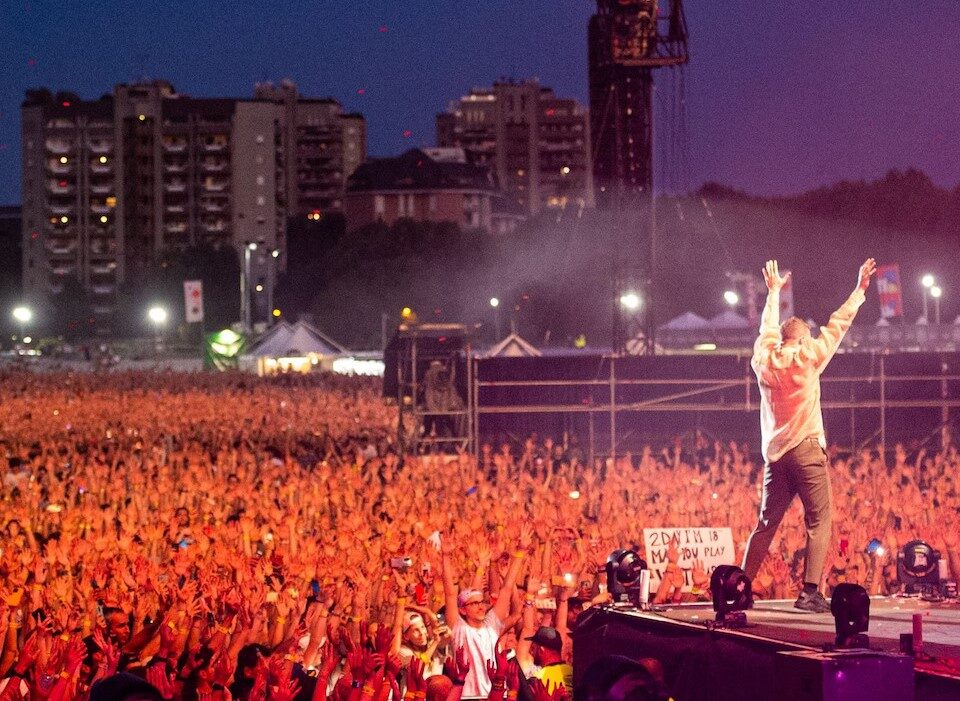
A summer with a 360-degree view of the Milan skyline: the VIU Pool
August 18, 2023
Monza, a city rich in history and an Italian symbol of the Formula 1 Grand Prix
September 1, 2023A Secret Milan hides behind the fascinating and frenetic lifestyle of Italy’s fashion and design capital. Indeed, if you poke around beyond the most famous monuments, you can glimpse remnants of war from the Five Days, track down real colonies of pink flamingos behind the facade of a stately palace, or discover an extravagant complex of pumpkin-shaped igloo houses in the Maggiolina area.
If you are a resident, or even just passing through the city, to the list of what to visit in Milan we would like to suggest adding an itinerary among some of the most unusual and mysterious places, allowing you to make real (if not unforgettable) discoveries.
.
First stop: the Rabbi’s House
Rabbi’s House on Via Poerio. Starting from the Hotel VIU Milan in the Paolo Sarpi area, a strategic location for this and other routes, you can proceed by bike, streetcar or metro to the Indro Montanelli Garden – Porta Venezia stop -, one of the green spaces and parks in Milan not to be missed. From here it is only a three-minute walk to the first destination of Secret Milan: house 770, at 35 Via Carlo Poerio.
So different from the others, and imbued with an enveloping charm, it is famous in the city as “the Dutchman.” Its design evokes the architectural characteristics of Dutch houses, with distinctive lines that stand out among the Art Nouveau facades of Porta Venezia. This peculiarity gives the Rabbi’s House an aura of mystery, making it shine as a jewel of originality within Milan’s urban landscape.
But the surprise does not stop only at the distinctive appearance of the house. The dwelling is not a solitary work, but part of an unusual network of replicas found all over the world. The origin of this proliferation of 770 houses lies in a historically charged event: the original building, at 770 Eastern Parkway in Brooklyn (hence the name), served as a home for Rabbi Yosef Yitzchok Schneersohn, who found himself fleeing Nazi persecution.
The 770 houses, in their twelve examples, can be found in major U.S. cities such as New York, Cleveland and Los Angeles, in various locations spread across Canada, Israel, South America, Ukraine and one in Italy, precisely, in Milan. Finely renovated in the 1990s, it is distinguished by a facade with three pointed gables, red bricks, decorations with references to Kabbalah, and windows framed in white stone.
These reproductions of the 770 house in Brooklyn are a tangible tribute to history and faith, a link between distant places that remains etched in the collective memory. Indeed, the Milanese mansion is also now a landmark for the community, home to a library and events concerning Jewish culture.
Secret Milan, the itinerary continues between pink flamingos and the San Bernardino ossuary

Villa Invernizzi and pink flamingos. Heading back toward Corso Venezia, less than a ten-minute walk from the Rabbi’s House, at 7 Via dei Cappuccini is another of Milan’s mysterious places, perhaps the most… wildly fascinating. We are near the Palestro metro stop, and peeking through the gratings of Villa Invernizzi, it is possible to admire a colony of pink flamingos.
With their unmistakable stand on a single leg, and the elegance that makes them unique, the flamingos of Villa Invernizzi spend their days strolling around the garden, diving into the pond, and eating heedless of having the eyes of some passerby on them. Pink flamingos arrived in Milan in the 1970s, thanks to the passion and vision of Cavalier Romeo Invernizzi, an innovator in the Italian dairy industry, son of Giovanni, founder of the well-known fresh cheese company, and grandson of Carlo, a milkman and “stracchino maker” from the martesana area who lived in the second half of the 19th century.
Reflected in the figure of Romeo Invernizzi was a soul fond of rural life, combining the wisdom of the entrepreneur with a love of nature and animals. His wife Enrica Pessina, on the other hand, was a protagonist of Milan’s vibrant social life. The decision to move to Milan (Invernizzi’s factories, in the wake of “rivals” Galbani, were located between Melzo and the Bergamo countryside) was fueled by a bold and extraordinary idea: the import of a colony of pink flamingos directly from South America. The idea of being able to watch these magnificent birds dance in the wind and mirror themselves in the waters of the pond from his studio filled Romeo with serenity.
The specimens we admire today are all captive-born, proud descendants of the imported birds, a precious gift of nature and a symbol of an enduring passion.
The Church of San Bernardino ale Ossa. Leaving the flamingo colony behind, taking the red subway from Palestro to San Babila-or a short walk-you arrive at Piazza Santo Stefano, where you will find one of the strangest and most surprising churches in Milan: Church of San Bernardino alle Ossa. A narrow corridor, immediately to the right of the church’s entrance (located, by the way, a stone’s throw from the Duomo), provides access to the ossuary chapel. This small space with a square floor plan is adorned with an altar and a niche housing the statue of Our Lady of Sorrows, who kneels before the figure of Jesus.
What catches the eye, however, is the entire environment of the walls: here, skulls and bones are carefully arranged in the niches, on the cornices, pillars, and doors. The bones are not just part of a macabre decoration, but have themselves become decorative elements, creating a unique vision. The origins of this ossuary go back to the city’s past, one of those stories that fuels the fascination of secret Milan. It is said that the remains kept here belonged to the deceased from the now defunct Brolo Hospital, dedicated to lepers, or from various seventeenth-century cemeteries, which were also suppressed.
A local legend, an integral part of the Secret Milan, says that on November 2, the Day of the Dead, a little girl-whose remains are found at the altar of the ossuary-suddenly comes back to life, dragging other skeletons with her in an unusual dance.
The ossuary of the Church of San Bernardino is a real hidden treasure in the heart of Milan, a place that combines history, art and mystery. It emerges as a fascinating lure for those who wish to discover the timeless secrets and unique architecture that are part of Milan’s mysterious places.
The Demon Acerbi and the Cannonball. Leaving San Bernardino alle Ossa, before continuing with the last stop of our itinerary in secret Milan, we suggest you stretch to Palazzo Acerbi, at Corso di Porta Romana 3 (M3 Missori), in 1630 the home of the nobleman Ludovico Acerbi, known as “the devil.” In fact, during the terrible plague in Milan, it is said that he and the guests at his parties, were among the few to remain immune from the epidemic. And on the very facade of Palazzo Acerbi, a cannonball from the battles of the Five Days of Milan in 1848 is still visible.
Igloo houses in Maggiolina, an extravagant but useful project by Mario Cavallè
Igloo (and mushroom) houses in north Milan. The last stop on the Secret Milan itinerary can include a break for refreshment and relaxation at Hotel VIU Milan, easily going up by streetcar from Missori to Piazzale del Cimitero Monumentale. From here-with just a few stops on the Lilla Metro-you can reach Via Lepanto in the heart of the Maggiolina district, where a unique expression of architectural creativity is enshrined, evidence of a surprising past: the enigmatic “igloo houses.”
Originally created as a temporary project for evacuees after World War II, these houses are still considered one of the most curious residential experiments ever built in Italy. We are in the picturesque setting of northern Milan, where the urban fabric winds toward Greco Pirelli and the city’s old industrial area. Here, in the Maggiolina district, lie eight extraordinary examples of the audacity of architect Mario Cavallè. These “igloo houses” defy architectural conventions with their futuristic, almost extraterrestrial forms, remaining an example of timeless vision and creativity.
Initially conceived as temporary solutions for families displaced during World War II, some of these dwellings were later expanded and renovated, while others remained true to their original form.
The “igloo houses” embody the courage and vision of an architect who defied convention, leaving a tangible imprint on the urban landscape and the collective imagination of Milan.
For anyone wishing to visit these architectural wonders, the Lilla subway with the Marche and Istria stops offers convenient access to this fascinating fragment of Milan’s secret history.
Milan is therefore much more than fashion and fashion shows, and its offerings exceed visits to the Duomo, Brera or, among others, Castello Sforzesco. In fact, the city hides mysterious corners and magical places ready to be discovered. Secret Milan offers you an unmissable experience, while Hotel VIU Milan is the perfect retreat to enjoy the city. Located in the lively Paolo Sarpi area, the hotel knows how to pamper its guests with a refined yet familiar atmosphere, offering relaxation and comfort away from the chaos of the historic center, well connected and with a sustainable vocation.
Hotel VIU Milan also offers the only rooftop swimming pool with 360-degree views of the city, where you can enjoy a well-deserved break after your adventures in the city. Spacious rooms with designer furnishings add to the high quality and attention to all details, ensuring a tailor-made and impeccable stay.




